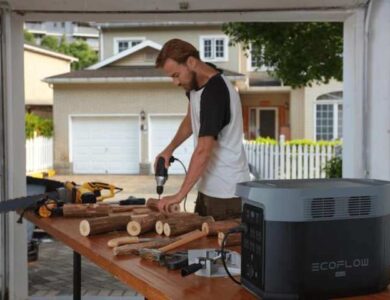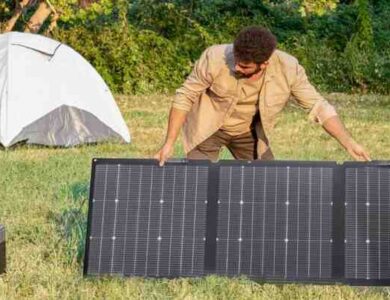Can Solar Panels Handle Extreme Weather Conditions?

Solar panels are quickly becoming one of the most popular sustainable power options for homes and businesses. But as extreme weather events become more frequent, many people wonder: can solar panels withstand these harsh conditions? From hurricanes to snowstorms and intense heat, it’s crucial to know how well solar panels hold up. Thanks to modern advancements, today’s solar panels are designed to be more durable than ever, ensuring consistent performance even in extreme climates. Whether you live in a region prone to heavy rain, snow, or high winds, solar panels are built to handle it all. In this article, we’ll explore how solar panels fare under different types of severe weather and what you can do to maximize their durability and efficiency.
How Are Solar Panels Designed to Withstand Extreme Weather?
Solar panels are engineered using robust materials like tempered glass and sturdy aluminum frames to ensure they last through tough weather. These materials are designed to handle everything from hail to high winds. Before they hit the market, solar panels undergo rigorous testing to meet international standards, like the IEC 61215, which simulates extreme conditions. This certification means the panels can endure heavy snow, hailstones, and strong gusts without damage. In recent years, newer models have been built with even more advanced technology, such as reinforced frames and improved waterproofing, to further increase their resilience. If you’re considering solar panels, rest assured that modern ones are built to handle the elements.
Solar Panels and High Winds
For those living in hurricane or tornado-prone areas, the concern of wind damage is real. However, solar panels are built to withstand winds up to 140 mph, making them highly wind-resistant. The key to their durability lies in how they’re installed. Proper mounting systems ensure that solar panels remain secure, even during strong storms. Wind anchors and additional fasteners can be used to provide extra support, especially in areas where high winds are common. By choosing solar panels rated for high wind zones and ensuring professional installation, homeowners can trust that their system will remain intact during severe wind events.
Solar Panels and Heavy Rain/Flooding
When it comes to heavy rain, solar panels are designed to be water-resistant. They have a sealed design to keep moisture out, preventing any internal damage. Additionally, the panels are often installed at an angle, allowing rainwater to easily slide off. This helps reduce the risk of water pooling and causing issues. In flood-prone areas, it’s common to install solar panels on elevated structures or rooftops, further protecting them from floodwaters. With proper maintenance, including checking the seals and connections, solar panels can continue functioning efficiently even in areas with heavy rainfall and potential flooding.
Solar Panels and Snow/Cold Weather
Many people think that snow will block sunlight and prevent solar panels from working in winter. However, solar panels are designed to operate even in cold climates. Snow typically slides off the panels due to their smooth surface and angled installation. Additionally, some panels have anti-snow coatings or heating elements to melt snow quickly. Cold temperatures can actually improve the efficiency of solar panels because they perform better in cooler conditions. So, whether you live in a region with harsh winters or occasional snowfall, solar panels can still provide reliable power throughout the cold season.
Solar Panels and Extreme Heat
While solar panels convert sunlight into electricity, extreme heat can slightly reduce their efficiency. This is due to the temperature coefficient, which measures how much a panel’s performance decreases as the temperature rises. However, high-quality solar panels have a low temperature coefficient, meaning they can still perform well even on scorching days. Proper installation is essential for managing heat—panels are typically installed with a small gap between them and the roof to allow airflow and cooling. If you live in a particularly hot region, choosing solar panels with a good heat tolerance can help you get the most out of your system.
Real Examples
There are many real-world cases where solar panels have stood up to extreme weather. In Puerto Rico, after Hurricane Maria, many solar panel systems remained operational while the grid was down. Similarly, in areas of Canada known for heavy snowfall, solar panels continue to generate power through the winter months. In desert climates, like Arizona or the Middle East, solar panels withstand extreme heat and continue providing power without significant drops in efficiency. These examples show that with the right system and installation, solar panels are capable of surviving even the harshest weather conditions and keeping homes and businesses powered.
Factors That Impact Solar Panel Durability in Extreme Weather
Several key factors influence how well solar panels withstand extreme weather. The quality of materials is essential—tempered glass and strong frames protect against impact and high winds. Proper installation ensures the system is secure, with the right angles to handle rain, snow, and wind pressure. Maintenance is also crucial; regular inspections help identify potential weaknesses or damage before they become serious problems. Additionally, the geographical location and local weather patterns will affect the type of solar panels and installation methods needed. Investing in high-quality solar panels and professional installation ensures maximum durability and performance.
Tips for Choosing Weather-Resistant Solar Panels
When choosing solar panels for regions prone to extreme weather, there are a few important factors to consider. First, look for solar panels that have certifications for high wind loads, hail resistance, and snow loads. Brands with a strong reputation for durability and quality should be prioritized. Make sure the panels are installed by professionals, using the correct mounting systems to handle the expected weather conditions. For those in hot climates, consider solar panels that have a low temperature coefficient to maintain efficiency. Additionally, look into warranties and insurance options to protect your investment against severe weather events.
Your Takeaway
In conclusion, solar panels are a reliable and resilient option for generating power in areas with extreme weather conditions. Thanks to advancements in technology and materials, modern solar panels are designed to handle everything from high winds and heavy rain to snowstorms and intense heat. With proper installation and regular maintenance, solar panels can continue to provide consistent energy even in the most challenging environments. Whether you’re facing hurricane-force winds, scorching heat, or snowy winters, solar panels are up to the task. Investing in durable, weather-resistant solar panels ensures that you can enjoy sustainable power no matter what nature throws your way.
Mehr Lesen: Angelo Stiller Hasenscharte



